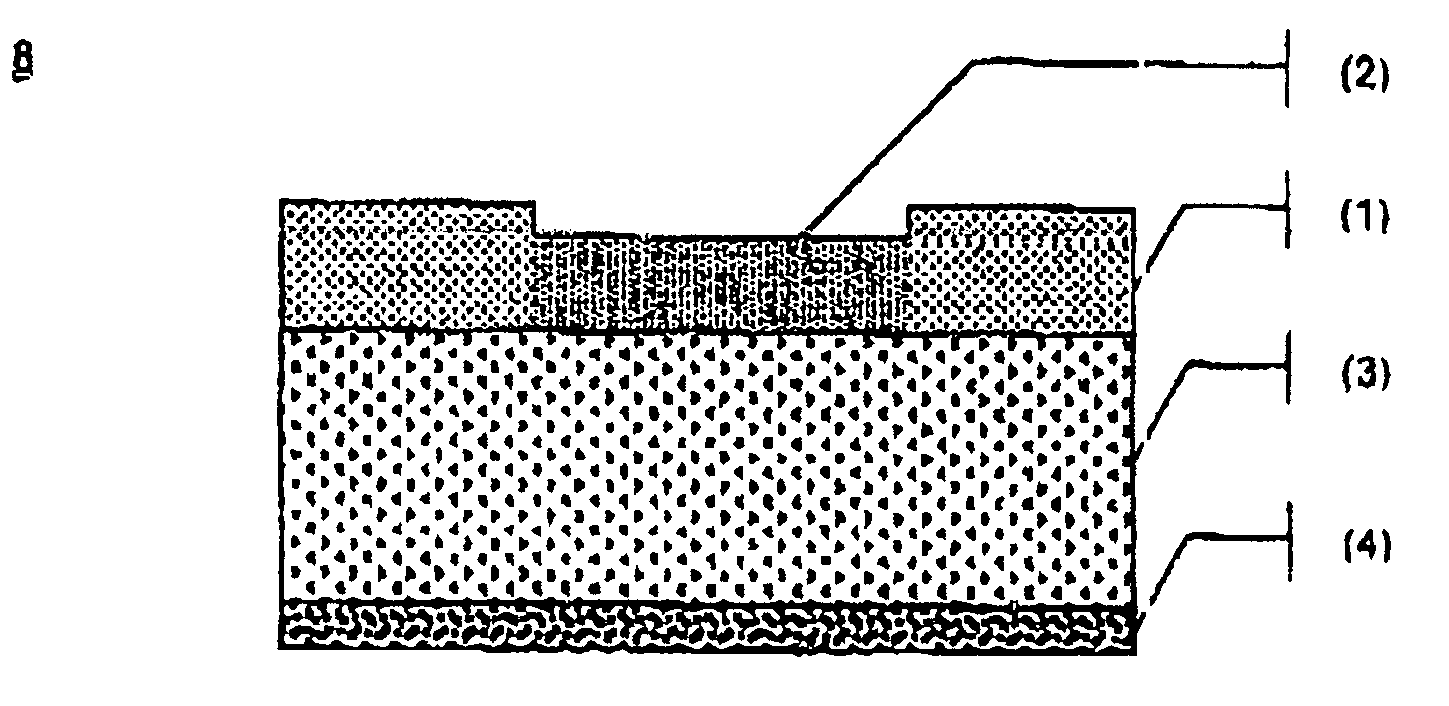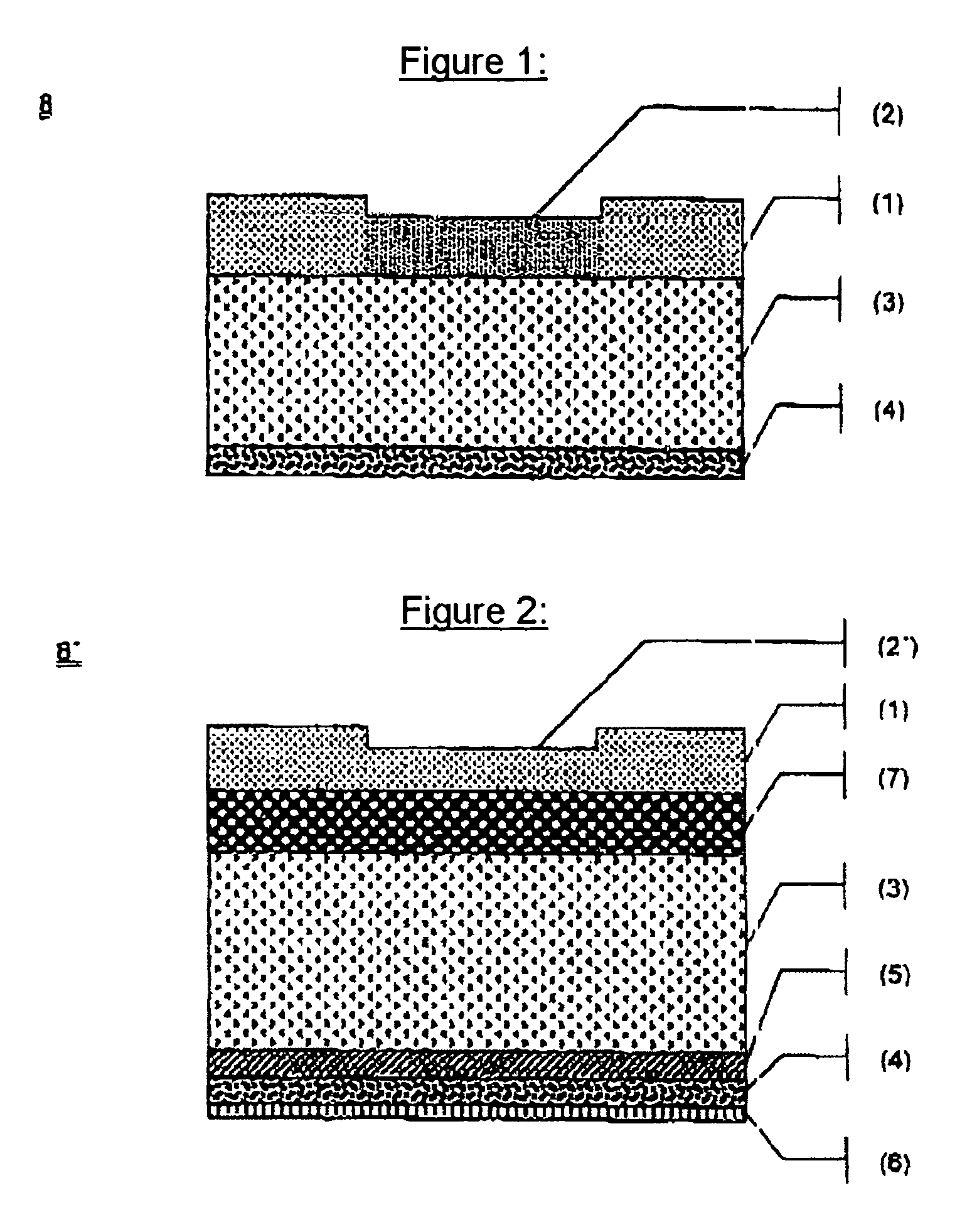Heat-sensitive recording sheet and the use thereof
a recording sheet and heat-sensitive technology, applied in the field of heat-sensitive recording sheets, can solve the problems of affecting the intended text image, affecting the quality of the recording sheet, and the production of heat-sensitive, so as to reduce the quantity of coating colors that are to be applied to the heat-sensitive recording layer, increase the absorption capacity, and reduce the quantity of coating colors. to be applied.
- Summary
- Abstract
- Description
- Claims
- Application Information
AI Technical Summary
Benefits of technology
Problems solved by technology
Method used
Image
Examples
example 1
[0060]A web of a woodfree paper with a mass per unit area of 90 g / m2 is produced by a papermaking machine. The paper web has watermarks produced by means of a dandy roll. The second web material produced is a heat-sensitive recording paper with a mass per unit area of 82 g / m2 (TQ 8067 from Mitsubishi HiTec Paper Flensburg GmbH). This heat-sensitive recording paper has an intermediate layer containing a pigment mixture and a protective layer covering the recording layer.
[0061]The two paper webs are laminated to produce a recording sheet according to the invention by using a colorless adhesive.
[0062]Firstly, in this case the side of the heat-sensitive recording paper which is to be laminated together with the first paper web is opposite the side of the heat-sensitive recording paper to which the recording layer is applied.
[0063]Secondly, in this case the side of the first paper web which is to be laminated together with the heat-sensitive recording paper is opposite the side of the fi...
example 2
[0065]In a manner corresponding to example 1, a recording sheet envisaged for use as a ticket is produced, with the difference that, instead of the heat-sensitive recording paper used in example 1, a heat-sensitive recording paper without a protective layer, of the grade T 7033 from Mitsubishi HiTec Paper Flensburg GmbH, with a mass per unit area of 72 g / m2 is used.
example 3
[0066]In a manner corresponding to example 1, a recording sheet envisaged for use as a ticket is produced. Instead of the heat-sensitive recording paper used in example 1, however, a heat-sensitive recording paper with a mass per unit area of 82 g / m2 (TG 8065 from Mitsubishi HiTec Paper Flensburg GmbH) is used. The protective layer of this heat-sensitive recording paper is produced in accordance with the variant specified in the present description of the protective layer disclosed in EP-B-0 909 242.
PUM
| Property | Measurement | Unit |
|---|---|---|
| heat- | aaaaa | aaaaa |
| heat-sensitive | aaaaa | aaaaa |
| heat sensitive | aaaaa | aaaaa |
Abstract
Description
Claims
Application Information
 Login to View More
Login to View More - R&D
- Intellectual Property
- Life Sciences
- Materials
- Tech Scout
- Unparalleled Data Quality
- Higher Quality Content
- 60% Fewer Hallucinations
Browse by: Latest US Patents, China's latest patents, Technical Efficacy Thesaurus, Application Domain, Technology Topic, Popular Technical Reports.
© 2025 PatSnap. All rights reserved.Legal|Privacy policy|Modern Slavery Act Transparency Statement|Sitemap|About US| Contact US: help@patsnap.com


